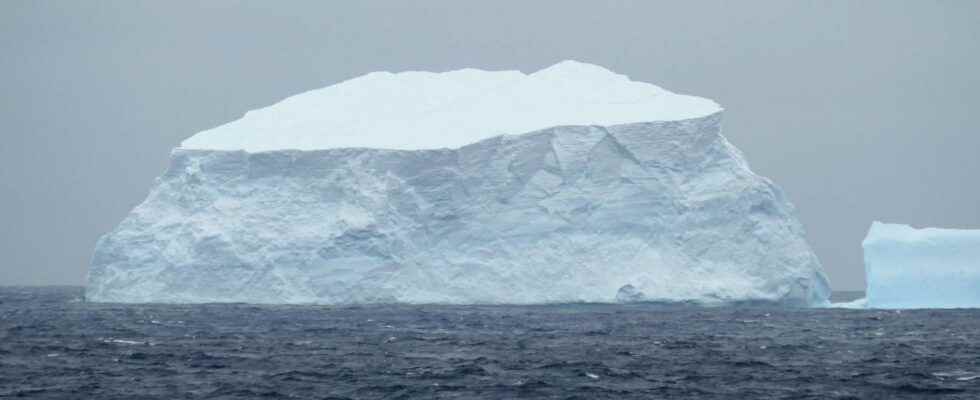In recent years, more and more icebergs seem to be breaking out of Antarctica. It has happened in the past. And researchers fear this is a sign that a shift is underway. In just a few years, it could lead to a lasting retreat of ice and a significant rise in global sea level.
You will also be interested
[EN VIDÉO] Antarctica: a gigantic sheet of ice breaks out This video, produced from radar images acquired by the TerraSAR-X satellite, shows the evolution of the formation of one of the largest known icebergs. Over the weeks and months, the satellite follows its evolution, from the appearance of the fault in the Larsen C ice shelf to its fragmentation.
Lessons from the past can inform choices for the future. The principle is known to almost everyone. And applied once again today by a team led by researchers from the University of Bonn (Germany). To better understand the effects that the global warming anthropogenic, they studied those induced by past warmings. Much more natural, them. They were particularly interested in the history of Antarctica.
THE’Antarctic, it should be remembered, is the name given to the region located around the South Pole of our Planet. It covers an area of nearly 15 million square kilometers, almost entirely covered with a thick layer of ice. And the ocean bordering Antarctica is warming up now. Even faster than the other oceans. Endangering the region’s ice cover. Through the phenomenon of iceberg formation, in particular.
Note that the iceberg detachment, calving, as the glaciologists say, is a very natural phenomenon. But if the global warming anthropogenic were to multiply the occurrences, it is all the ice on the Antarctic continent that could flow directly into the water – a bit like when you remove the cork from a bottle of champagne – and come to do rise in mean sea level.
Antarctica in full swing?
So, to try to anticipate what awaits us on this side, the researchers studied some sediment hidden in the depths of the Antarctic Ocean, dated natural climate records and counted debris carried by the ice. All on the side of what they call the“Iceberg Alley”, the main door access to lower latitudes. And they report today that after the last glacial maximum, sometime between 19,000 and 9,000 years ago, as the Earth’s climate warmed, Antarctica repeatedly released significant masses icebergs in the ocean.
But perhaps the most surprising comes from the speed with which the phenomenon was able to occur. Because glaciologists show that the ice cap can thus be destabilized – but also restored – by periods of melting fast in just a decade. Understand that it took an extremely short time, during these different periods of the past, to trigger a movement durable cast iron. Stretching over several centuries, sometimes even over a whole millennium. As a result, water levels are rising all over the world.
In-depth statistical analysis also enabled researchers to identify tipping points for these changes. And if the evolution currently observed in Antarctica can be interpreted in the same way as these past events, they believe that the region may already be in the process of experiencing a shift. “Our results are consistent with a growing body of evidence suggesting that the acceleration of ice mass loss in Antarctica over the past few decades could mark the start of a self-sustaining and irreversible period of retreat. ice cap and D’substantial rise in global sea level“, concludes Michael Weber, geophysicist, in a press release from the University of Bonn in Germany. As to when we might revisit the eventual stabilization of the ice sheet, researchers still don’t know. This will depend significantly on the magnitude of future global warming.
Interested in what you just read?
.
fs11
